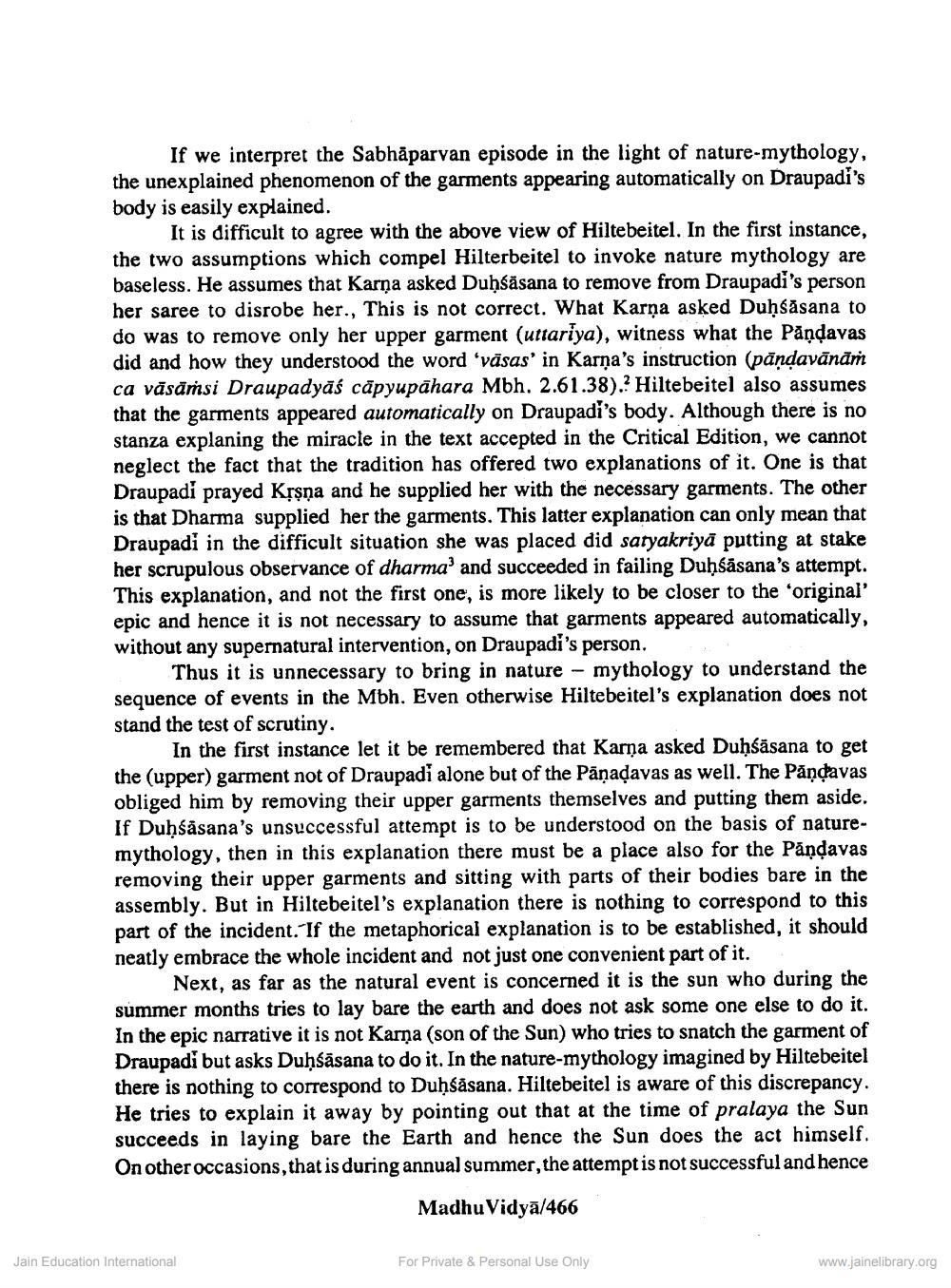________________
If we interpret the Sabhäparvan episode in the light of nature-mythology, the unexplained phenomenon of the garments appearing automatically on Draupadi's body is easily explained.
It is difficult to agree with the above view of Hiltebeitel. In the first instance, the two assumptions which compel Hilterbeitel to invoke nature mythology are baseless. He assumes that Karņa asked Duḥśäsana to remove from Draupadi's person her saree to disrobe her., This is not correct. What Karņa asked Duhsasana to do was to remove only her upper garment (uttariya), witness what the Pandavas did and how they understood the word 'vāsas' in Karna's instruction (pāndavānām ca vāsāṁsi Draupadyāś căpyupāhara Mbh. 2.61.38).? Hiltebeitel also assumes that the garments appeared automatically on Draupadi's body. Although there is no stanza explaning the miracle in the text accepted in the Critical Edition, we cannot neglect the fact that the tradition has offered two explanations of it. One is that Draupadi prayed Krşna and he supplied her with the necessary garments. The other is that Dharma supplied her the garments. This latter explanation can only mean that Draupadi in the difficult situation she was placed did satyakriyā putting at stake her scrupulous observance of dharma' and succeeded in failing Duḥśāsana's attempt. This explanation, and not the first one, is more likely to be closer to the original epic and hence it is not necessary to assume that garments appeared automatically, without any supernatural intervention, on Draupadi's person.
Thus it is unnecessary to bring in nature - mythology to understand the sequence of events in the Mbh. Even otherwise Hiltebeitel's explanation does not stand the test of scrutiny.
In the first instance let it be remembered that Karņa asked Duḥśāsana to get the (upper) garment not of Draupadi alone but of the Pāņadavas as well. The Pāņdavas obliged him by removing their upper garments themselves and putting them aside. If Duhsasana's unsuccessful attempt is to be understood on the basis of naturemythology, then in this explanation there must be a place also for the Pandavas removing their upper garments and sitting with parts of their bodies bare in the assembly. But in Hiltebeitel's explanation there is nothing to correspond to this part of the incident. If the metaphorical explanation is to be established, it should neatly embrace the whole incident and not just one convenient part of it.
Next, as far as the natural event is concerned it is the sun who during the summer months tries to lay bare the earth and does not ask some one else to do it. In the epic narrative it is not Karna (son of the Sun) who tries to snatch the garment of Draupadi but asks Duhśāsana to do it. In the nature-mythology imagined by Hiltebeitel there is nothing to correspond to Duhśásana. Hiltebeitel is aware of this discrepancy. He tries to explain it away by pointing out that at the time of pralaya the Sun succeeds in laying bare the Earth and hence the Sun does the act himself. On other occasions, that is during annual summer, the attempt is not successful and hence
Madhu Vidyā/466
Jain Education International
For Private & Personal Use Only
www.jainelibrary.org




